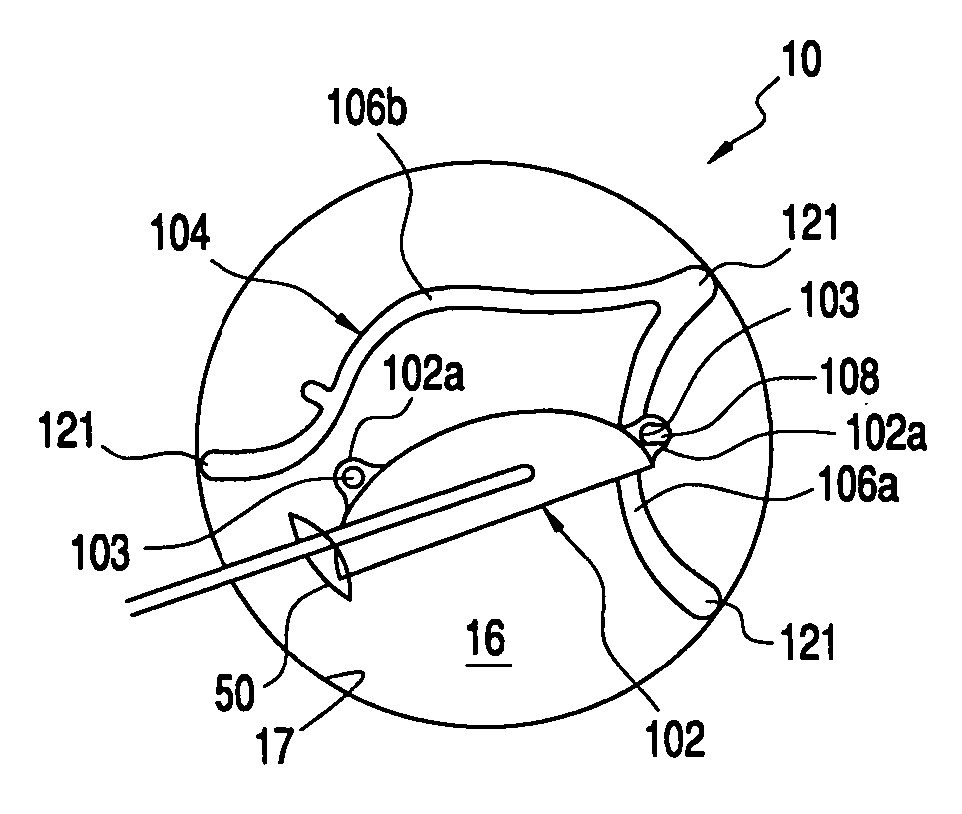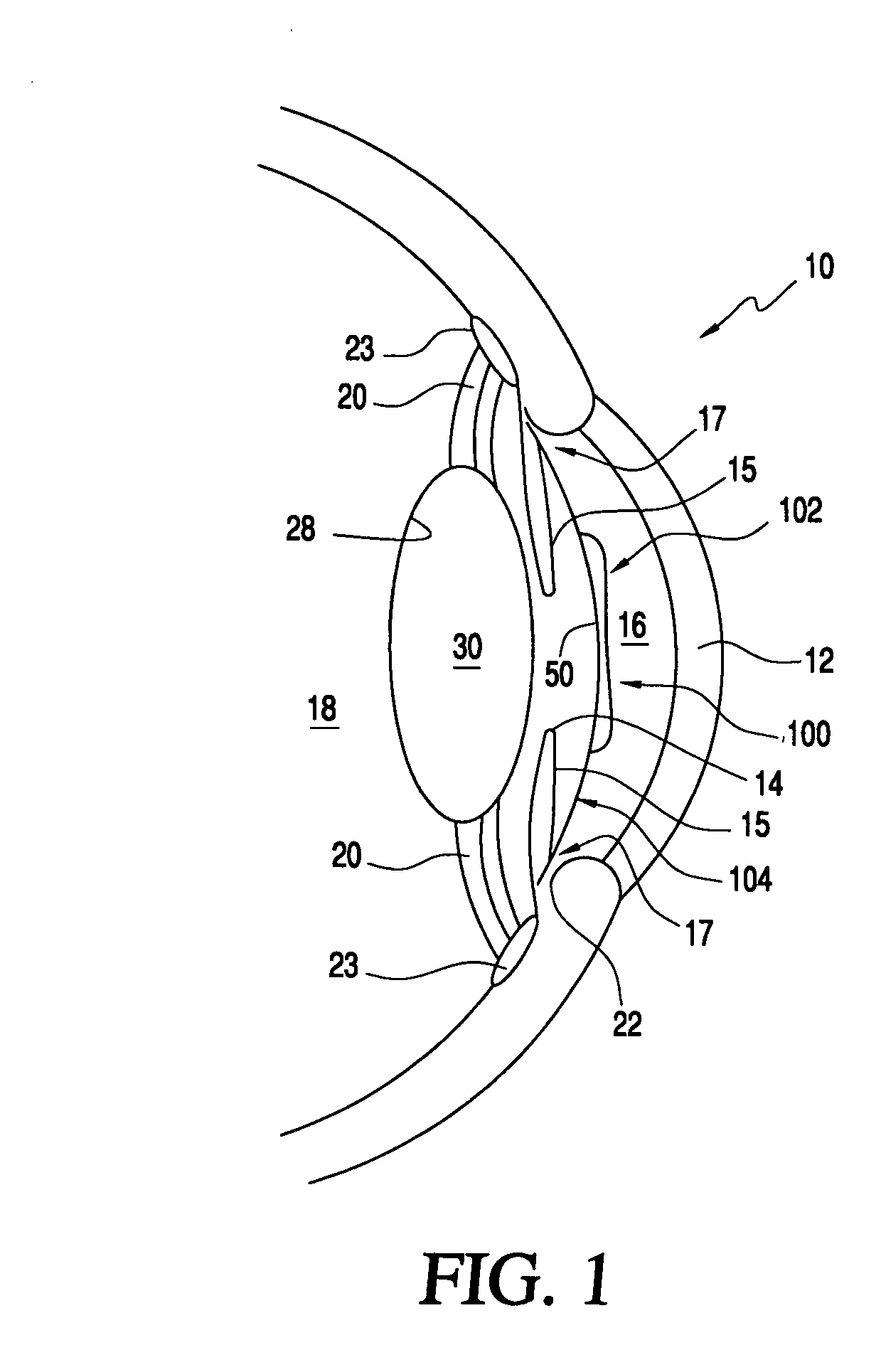Refractive corrective lens (RCL)
a technology of refractive correction and lens, which is applied in the field of artificial ocular lenses, can solve the problems of limited intraocular lens choice by eye surgeons, inability to visually correct the patient's eye to a suitable extent or degree, and limited actual manufacturing and implantation of refractive correction lenses (rcls) with little clinical and statistical data
- Summary
- Abstract
- Description
- Claims
- Application Information
AI Technical Summary
Benefits of technology
Problems solved by technology
Method used
Image
Examples
example 1
Insertion of the Two-Part Lens into the Eye
[0151] A two (2) mm small incision is made near the limbus of the eye. Buffers are injected into the anterior chamber of the eye 10. The lens haptic 104 is inserted as shown in FIGS. 5A-H by a rotation action. The eye surgeon grasps the folded lens optic 102 with the outside (distal) lens optic eyelet 103 leading forward. The eye surgeon then pushes the lens optic 102 through the small incision and hooks the distal lens optic eyelet 103 onto the distal haptic cleat 108 of the lens haptic 104. Then, the eye surgeon slowly opens the forceps while maintaining slight tension. The lens optic 104 is then grasped near or onto the closest lens optic eyelet 103 (proximal), and pulls it over the closer haptic cleat 108 of the lens haptic 104.
[0152] Therefore, the refractive correction lens 100 according to the present invention presents a number of advantages. It is inserted in two separate pieces significantly reducing the bulk so that the small i...
example 2
[0180] The following is an example of a patient information request form to gather information for prescribing and specifying a custom refractive correction lens (RCL) according to the present invention.
1)Dr. Name2)Dr. Practice Name3)address4)phone number e-mail address5)patient Name6)patient Code7)which EyeOSODBoth8)AC Depth9)axial length10)refraction (Exact, 00D)11)aspheric correction Yes No / Amount12)presbyopia Yes / Nopreferred reading distancehow close up? (19 cm to 50 cm)which Lens Designaccommodating (38 CM)multifocal (50 cm) defractive / refractivetri-focal / bi focalcombination (19 cm to 50 cm)trifocal / bifocal13)astigmatism, describe:(amount)(location in degree)with rule against rule obliqueother-describe14)aberration: Best Zernike Modelcornea / lens / retina / totalamountlocationcorneaspherical aberrationhigh order astigmatismtrefoilother describe15)other items neededpupil concentric / non-concentric16)materialsiliconeacryliccollagenpolyimideotherpreferenceBlue light blocking?17)optica...
PUM
 Login to View More
Login to View More Abstract
Description
Claims
Application Information
 Login to View More
Login to View More - R&D
- Intellectual Property
- Life Sciences
- Materials
- Tech Scout
- Unparalleled Data Quality
- Higher Quality Content
- 60% Fewer Hallucinations
Browse by: Latest US Patents, China's latest patents, Technical Efficacy Thesaurus, Application Domain, Technology Topic, Popular Technical Reports.
© 2025 PatSnap. All rights reserved.Legal|Privacy policy|Modern Slavery Act Transparency Statement|Sitemap|About US| Contact US: help@patsnap.com



